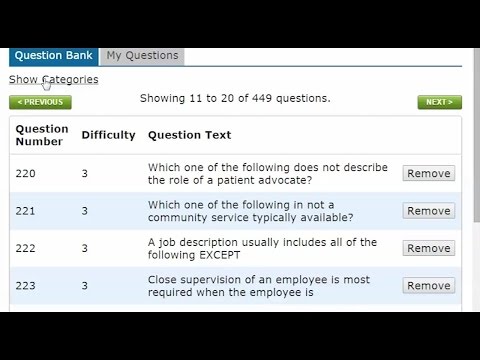The Difference Between Medical Assistants and LVNs
Contents
- What is a medical assistant?
- What is an LVN?
- The difference between medical assistants and LVNs
- The duties of a medical assistant
- The duties of an LVN
- The education of a medical assistant
- The education of an LVN
- The job outlook for medical assistants
- The job outlook for LVNs
- The salary of a medical assistant
Explore the key differences between Medical assistants and licensed vocational nurses (LVNs), including their education and training, job duties, and career outlook.
Checkout this video:
What is a medical assistant?
A medical assistant is a multi-skilled professional who supports the work of physicians and other health professionals. They perform administrative and clinical tasks in medical offices and clinics.
Medical assistants may be responsible for greeting patients, scheduling appointments, handling billing and insurance paperwork, taking medical histories, recording vital signs, preparing examination rooms, and assisting with procedures. Some Medical Assistants also collect and prepare laboratory specimens or perform basic laboratory tests on-site, administer medications as directed by physicians, give injections, take X-rays, and provide patient education.
The scope of practice for medical assistants varies from state to state. Most states allow medical assistants to perform basic tasks under the supervision of a licensed healthcare provider. In some states, medical assistants may have more advanced roles such as administering medications or removing sutures (stitches).
Medical assistants must complete a formal education program that typically lasts one year or less. Some programs award a certificate of completion, while others award an associate degree. Most states do not have licensure requirements for medical assistants, but some states have certification requirements.
What is an LVN?
An LVN is a licensed professional nurse who has met the requirements set by the state Board of Nursing. He or she has completed an accredited practical nursing program and passed the National Council Licensure Examination for Practical Nurses (NCLEX-PN). LVNs work under the supervision of an RN, physician, or another licensed healthcare professional.
Medical assistants are non-licensed health care professionals who perform administrative and clinical tasks in medical facilities under the supervision of physicians and other licensed health care professionals. Most states do not require certification for medical assistants, although some employers may prefer or require certification.
The difference between medical assistants and LVNs
When exploring health care careers, you may notice that there are multiple job titles with overlapping duties. Two common examples are medical assistants and licensed vocational nurses (LVNs). Although both positions work under the supervision of doctors and registered nurses (RNs) to provide patient care, there are some key differences between these roles.
Medical assistants usually have more clinical duties, such as taking patients’ vital signs, administering injections, and performing basic laboratory tests. They may also perform administrative tasks, such as scheduling appointments and updating medical records In contrast, LVNs typically provide more hands-on nursing care, such as bathing and feeding patients, changing dressings, and checking blood pressure.
Both medical assistants and LVNs must complete formal training programs and earn certification before they can begin working. Medical assistants typically complete one-year certificate or diploma programs, while LVNs must complete state-approved vocational nursing programs that last about a year. Some community colleges also offer two-year Associate’s degree programs in medical assisting or nursing
The duties of a medical assistant
Medical assistants are unlicensed personnel who perform non-clinical and clinical tasks to keep medical offices running smoothly. Duties may include handling correspondence, scheduling appointments, updating and filing patient Medical records answering telephones, handling billing and insurance paperwork, placing orders for office and laboratory supplies, stocking examination rooms, preparing patients for examinations and performing basic laboratory tests. Many medical assistants take on additional responsibilities such as handling coding and transcription for physicians’ dictation, administering medications as directed by a physician or licensed nurse, giving injections under the direction of a physician or licensed nurse and performing basic X-rays.
In some states medical assistants may be allowed to perform more advanced procedures such as intubations, electrocardiograms (EKGs), phlebotomy (drawing blood) and minor surgery assistance. These expanded duties are usually carried out under the supervision of a licensed nurse or physician. Medical assistants must complete a postsecondary education program to get started in this career. Most programs take about 1 year to complete and result in a certificate or diploma. Some community colleges offer 2-year associate’s degree programs in medical assisting.
The duties of an LVN
An licensed vocational nurse (LVN) works under the direct supervision of an RN. Duties include taking vital signs, administering injections and oral medications, changing dressings, and collecting lab specimens. LVNs also record patients’ charting and progress notes. Some LVNs work in long-term care facilities where they provide basic nursing care to patients with chronic illnesses or disabilities.
The education of a medical assistant
Medical assistants and licensed vocation nurses (LVNs) are both vital members of the healthcare team. They work alongside doctors and nurses to provide care to patients, but their roles are different. Medical assistants typically have less medical training than LVNs and do not need to be licensed, but LVNs must complete an accredited vocational nursing program and pass the NCLEX-PN exam.
The education of an LVN
An LVN must complete an accredited practical nursing program and pass the National Council Licensure Examination for Licensed Practical Nurses (NCLEX-PN). Although an LVN education may be completed in as little as one year, most programs range from 12 to 18 months in length. Many technical and community colleges, as well as some hospitals, offer LVN programs.
The job outlook for medical assistants
The job outlook for medical assistants is good. There are many opportunities for medical assistants, especially in larger cities. The median salary for medical assistants is $30,590 per year. Salary ranges for medical assistants can vary depending on experience and location.
Medical assistants typically have an associate degree from a community college or a certificate from a vocational school. Some states require certification for medical assistants. Certification is not required in all states, but it may be beneficial to get certified.
LVNs (licensed vocational nurses) provide basic nursing care. They work under the supervision of a registered nurse or a doctor. The median salary for LVNs is $43,080 per year. Salary ranges for LVNs can vary depending on experience and location.
LVNs typically have a certificate or an associate degree from a community college or vocational school. Most states require LVNs to be licensed, although the requirements vary from state to state.
The job outlook for LVNs
LVNs typically have more job responsibilities than medical assistants, so their job outlook is more positive. Medical assistants are expected to see a 29% growth in jobs from 2019 to 2029, much faster than the average for all occupations. LVNs are expected to see an 11% growth in jobs during the same time period.
The salary of a medical assistant
The salary of a medical assistant can vary depending on their experience, education, and training. The average salary for a medical assistant is $35,000. Medical assistants with more experience can earn up to $50,000.







